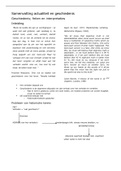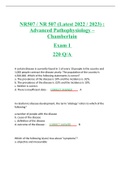Samenvatting
Summary Migrants and Integration - 2022 - Lectures + Extensive literature
- Instelling
- Universiteit Utrecht (UU)
In this summary I have added my lecture notes and the mandatory literature of the course Migrants and Integration. I have made extensive summaries of the mandatory readings, you can find all of the readings in the table of contents.
[Meer zien]













